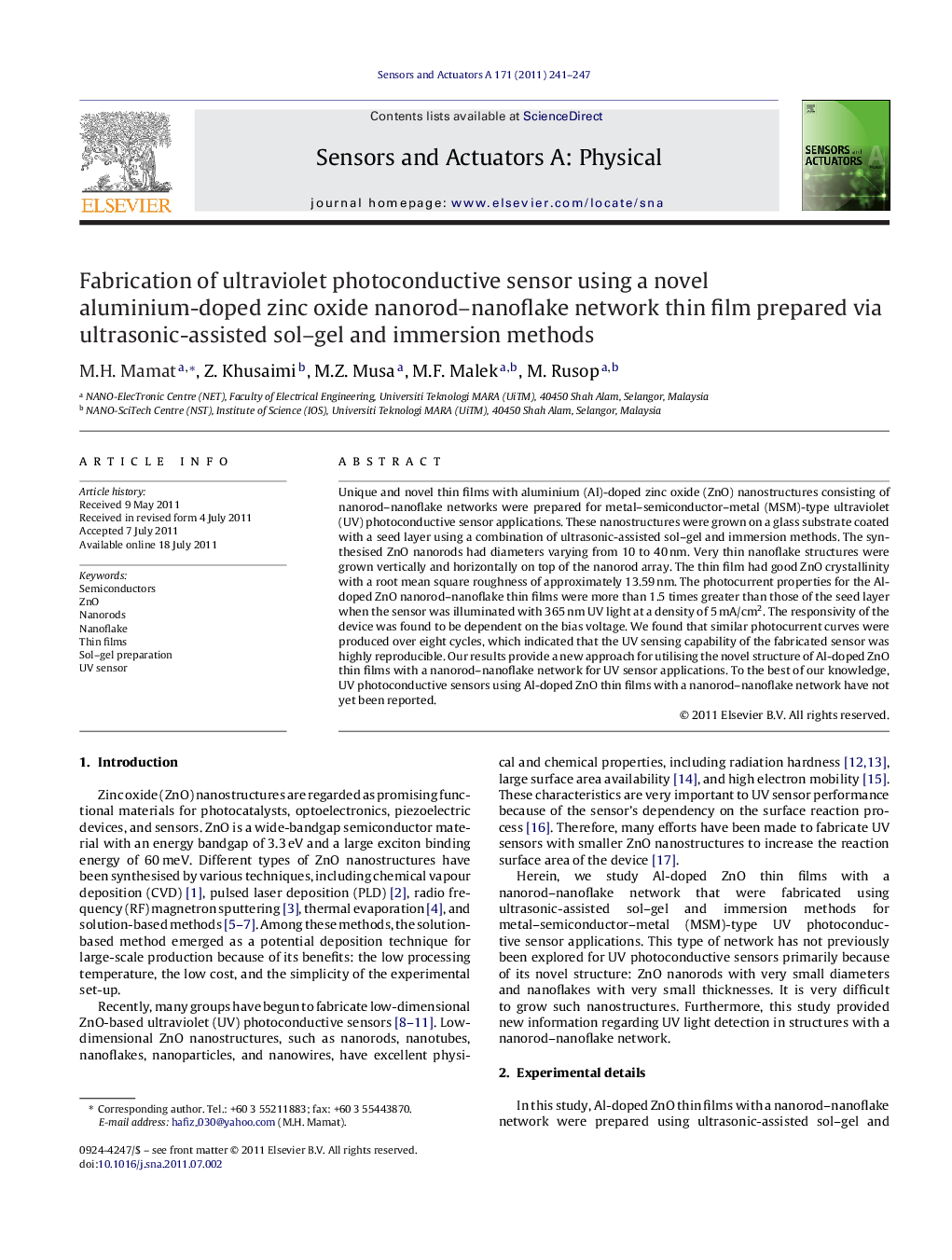| Article ID | Journal | Published Year | Pages | File Type |
|---|---|---|---|---|
| 737955 | Sensors and Actuators A: Physical | 2011 | 7 Pages |
Unique and novel thin films with aluminium (Al)-doped zinc oxide (ZnO) nanostructures consisting of nanorod–nanoflake networks were prepared for metal–semiconductor–metal (MSM)-type ultraviolet (UV) photoconductive sensor applications. These nanostructures were grown on a glass substrate coated with a seed layer using a combination of ultrasonic-assisted sol–gel and immersion methods. The synthesised ZnO nanorods had diameters varying from 10 to 40 nm. Very thin nanoflake structures were grown vertically and horizontally on top of the nanorod array. The thin film had good ZnO crystallinity with a root mean square roughness of approximately 13.59 nm. The photocurrent properties for the Al-doped ZnO nanorod–nanoflake thin films were more than 1.5 times greater than those of the seed layer when the sensor was illuminated with 365 nm UV light at a density of 5 mA/cm2. The responsivity of the device was found to be dependent on the bias voltage. We found that similar photocurrent curves were produced over eight cycles, which indicated that the UV sensing capability of the fabricated sensor was highly reproducible. Our results provide a new approach for utilising the novel structure of Al-doped ZnO thin films with a nanorod–nanoflake network for UV sensor applications. To the best of our knowledge, UV photoconductive sensors using Al-doped ZnO thin films with a nanorod–nanoflake network have not yet been reported.
